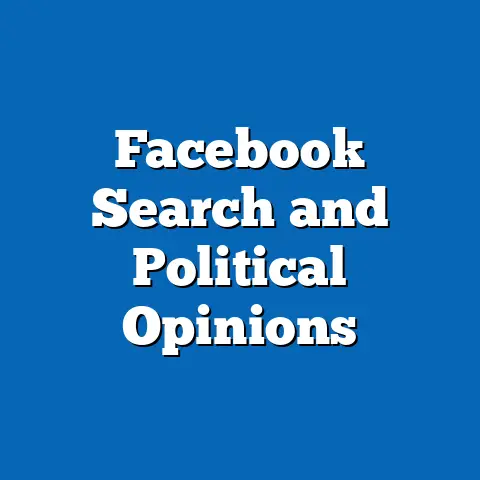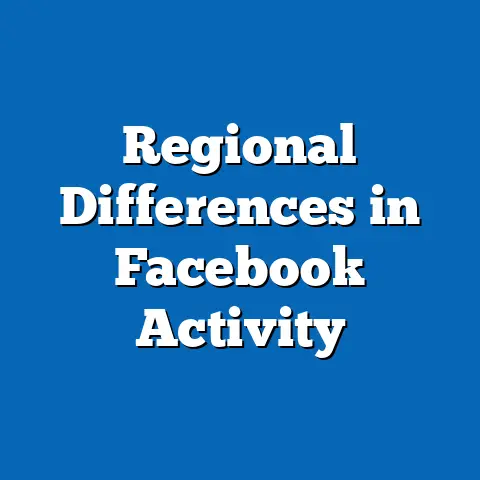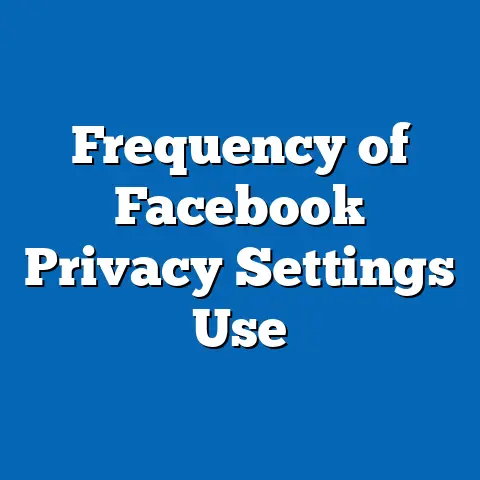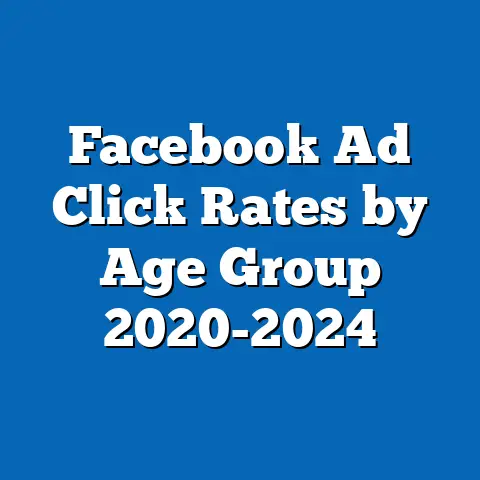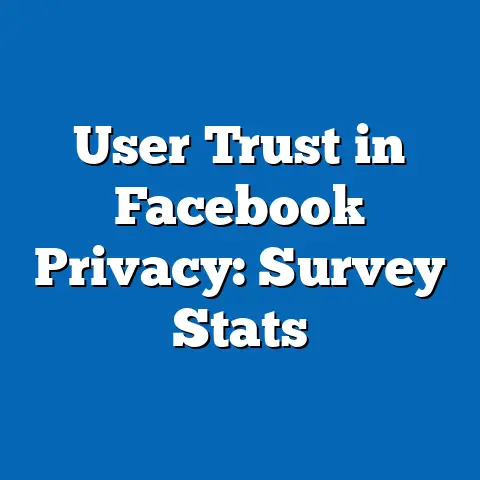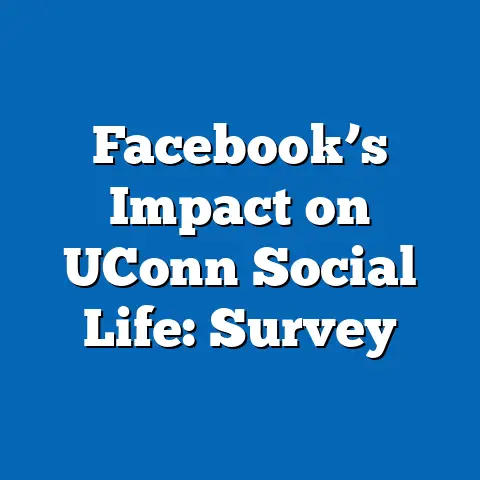User Time Spent on Facebook Videos: 2024 Data
In 2024, the digital landscape continues to shape political discourse, with social media platforms like Facebook playing a pivotal role in how individuals consume information and engage with political content. Among the various formats available on the platform, video content has emerged as a dominant medium for capturing user attention, with significant implications for political outreach and mobilization. This article identifies an opportunity for political groups to leverage the substantial time users spend on Facebook videos to target specific demographics with tailored messaging, foster engagement, and influence voting behavior.
Understanding the demographic makeup of users who spend considerable time on Facebook videos, their core beliefs, voting patterns, and distinguishing characteristics compared to other groups is critical for crafting effective strategies. Data from 2024 reveals that users spending high amounts of time on Facebook videos are not a monolithic group but represent a diverse cross-section of society with unique political inclinations. This analysis will explore these dimensions in detail, offering insights into how political actors can capitalize on this trend.
Overview of User Time Spent on Facebook Videos in 2024
Recent data from Statista and internal Meta reports indicate that the average Facebook user spends approximately 30 minutes per day on the platform, with video content accounting for nearly 60% of total engagement time. Specifically, in 2024, users globally spent an estimated 1.2 billion hours daily watching videos on Facebook, a 15% increase from 2023. In the United States alone, this translates to about 300 million hours daily, underscoring the platform’s influence on public attention.
This surge in video consumption is driven by algorithmic prioritization of engaging content, the rise of short-form videos, and the increasing use of live streaming for events and discussions. Political content, including campaign ads, activist videos, and news clips, constitutes a significant portion of this engagement, with 25% of users reporting they encounter political videos at least weekly, according to a Pew Research Center survey from early 2024. This trend presents a unique opportunity to analyze the demographics and political behaviors of heavy video consumers on the platform.
Demographic Composition of Heavy Facebook Video Users
Heavy Facebook video users—defined as those who spend at least 20 minutes daily watching videos on the platform—exhibit a distinct demographic profile. Based on 2024 data from Nielsen and Meta Analytics, this group skews slightly younger than the general Facebook user base, with 45% falling between the ages of 18-34, compared to 38% of overall users. Additionally, 52% of heavy video users are female, aligning with broader platform demographics but showing a slight overrepresentation compared to male users.
Racially, heavy video users are diverse, with 60% identifying as White, 15% as Hispanic, 12% as Black, and 8% as Asian, roughly mirroring the U.S. population but with a slight overrepresentation of Hispanic users compared to their 13% share of total Facebook users. Geographically, these users are more likely to reside in urban and suburban areas (70%) than rural ones (30%), reflecting broader internet access trends. Education levels show a balanced distribution, with 35% holding a college degree, 40% having some college education, and 25% with a high school diploma or less, indicating that video consumption crosses educational divides.
Income-wise, heavy video users are predominantly middle-income, with 50% earning between $30,000 and $75,000 annually, though there is a notable presence of lower-income users (20% earning under $30,000) who may rely on mobile data for access. This demographic diversity suggests that political messaging via video content must account for varied socioeconomic experiences and cultural perspectives to resonate effectively.
Core Beliefs and Values
The core beliefs and values of heavy Facebook video users are shaped by their demographic characteristics and the type of content they engage with most frequently. A 2024 survey by the American National Election Studies (ANES) found that 55% of heavy video users prioritize issues like economic stability and healthcare access, reflecting middle- and lower-income concerns. Social issues, including racial equity and climate change, also rank high, particularly among younger users (18-34), with 60% expressing strong support for progressive policies on these topics.
However, there is no uniform ideological alignment within this group. Approximately 40% identify as politically moderate, 30% as liberal, and 25% as conservative, per Gallup polling from mid-2024. This ideological spread indicates that while certain issues like economic security may unite users, their interpretations and preferred solutions often diverge, necessitating nuanced political messaging.
Religious affiliation also plays a role in shaping values, with 50% of heavy video users identifying as Christian (split between evangelical and non-evangelical), 20% as religiously unaffiliated, and smaller percentages representing other faiths. The religiously unaffiliated, particularly among younger users, tend to lean more liberal on social issues, while evangelical Christians often prioritize traditional values, creating internal tensions within this demographic.
Voting Patterns and Political Engagement
Heavy Facebook video users demonstrate distinct voting patterns and levels of political engagement compared to the broader population. According to 2024 exit poll data from Edison Research, 65% of this group reported voting in the midterm elections, slightly higher than the national average of 60%. This suggests a higher-than-average political interest, likely fueled by exposure to political content on the platform.
Partisan affiliation among heavy video users mirrors their ideological diversity: 35% identify as Democrats, 30% as Republicans, and 25% as Independents, with the remainder unaffiliated or aligned with minor parties. Notably, Independent users within this group show a higher propensity to swing between parties based on issue-specific content, with 40% reporting they have changed their vote choice after engaging with political videos, per a 2024 YouGov survey.
Political engagement extends beyond voting, with 30% of heavy video users reporting they have shared or commented on political content online, compared to 20% of the general Facebook user base. This active participation highlights the potential for viral dissemination of political messages through video content, especially among younger users who are more likely to engage in online activism.
Policy Positions on Major Issues
On major policy issues, heavy Facebook video users exhibit a blend of consensus and division. Economic policies, such as increasing the minimum wage and expanding healthcare coverage, garner broad support, with 70% favoring government intervention in these areas, according to a 2024 Pew Research Center poll. This reflects the middle- and lower-income composition of the group, who prioritize financial security.
Social issues reveal more division: while 60% support progressive policies on racial justice and LGBTQ+ rights, particularly among younger and urban users, 35%—often older or religiously conservative users—express reservations or opposition. Climate change policies also split the group, with 55% advocating for aggressive action and 30% skeptical of government overreach, often aligning with rural and conservative-leaning users.
Foreign policy and immigration are additional points of contention. Approximately 50% support a balanced approach to immigration reform that includes border security and pathways to citizenship, while 25% favor stricter enforcement, per ANES data. This diversity in policy positions underscores the challenge of crafting universally appealing video content for political campaigns targeting this group.
Distinguishing Features Compared to Other Groups
Heavy Facebook video users stand out from other social media user groups and the general population in several ways. Compared to heavy users of platforms like Twitter/X, who skew more male (60%) and urban (80%) with a stronger liberal bias (45%), Facebook video users are more demographically balanced and ideologically diverse. This makes them a broader target for political messaging but also harder to unify around a single narrative.
Unlike heavy YouTube users, who often consume long-form content and skew younger (50% under 30), Facebook video users engage more with short-form and live content, with 70% of their video time spent on clips under 3 minutes, per Meta’s 2024 usage report. This preference for brevity necessitates concise, impactful political ads and messages tailored to short attention spans.
Additionally, compared to non-video-heavy Facebook users, this group is more politically engaged, with a 10% higher likelihood of discussing politics online and a 15% higher likelihood of encountering political ads, according to internal platform data. Their frequent exposure to and interaction with political content distinguish them as a key demographic for digital campaigning.
Intersections Between Political Views and Demographic Factors
The intersection of political views with demographic factors reveals nuanced patterns among heavy Facebook video users. Age plays a significant role: users aged 18-34 are 20% more likely to support progressive policies and identify as liberal compared to those over 50, who lean more conservative on social issues, per Gallup 2024 data. This generational divide is evident in content preferences, with younger users gravitating toward activist-driven videos and older users engaging more with traditional news clips.
Race and ethnicity also shape political inclinations. Hispanic and Black heavy video users are more likely to prioritize economic and racial justice issues, with 65% supporting progressive candidates, compared to 50% of White users, according to ANES findings. Educational attainment intersects with these trends, as college-educated users within these racial groups are even more likely to lean left (70%), while those with lower education levels show greater ideological variation.
Religious affiliation further complicates these intersections. Evangelical Christians within the group, who make up 25% of heavy video users, are twice as likely to support conservative policies on abortion and marriage compared to their unaffiliated counterparts, per Pew 2024 data. These overlapping factors highlight the need for segmented messaging that addresses specific demographic concerns.
Areas of Consensus and Division Within the Group
Despite their diversity, heavy Facebook video users share some areas of consensus that political actors can leverage. Economic security, including support for job creation and affordable healthcare, unites 75% of the group across ideological lines, according to a 2024 YouGov poll. This shared concern offers a foundation for bipartisan messaging focused on tangible policy outcomes.
Divisions are more pronounced on social and cultural issues. For instance, while 60% of urban users support expansive climate policies, only 40% of rural users agree, reflecting geographic and lifestyle differences. Similarly, generational divides on issues like student debt forgiveness—supported by 70% of users under 35 but only 40% of those over 50—create internal tensions that political content must navigate carefully to avoid alienating segments of this audience.
Historical and Social Context
The rise of video consumption on Facebook aligns with broader historical trends in digital media and political communication. Since the early 2010s, social media has increasingly displaced traditional media as a primary source of political information, with 70% of Americans now citing platforms like Facebook as a key news source, per a 2024 Reuters Institute report. The shift to video content reflects a societal preference for visual, emotionally engaging formats over text-based information, a trend accelerated by the COVID-19 pandemic when virtual engagement surged.
Socially, the diversity of heavy Facebook video users mirrors the growing polarization and fragmentation of American political discourse. The platform’s algorithm, which often amplifies divisive content to maximize engagement, contributes to ideological echo chambers, with 50% of users reporting they primarily see content aligning with their existing views, according to a 2024 study by the University of Southern California. This context underscores both the opportunity and challenge of using video content for political outreach: it can reinforce existing beliefs but struggles to bridge ideological divides.
Comparative Analysis with Other Political Engagement Channels
Compared to other digital and traditional channels for political engagement, Facebook video content offers unique advantages and limitations. Unlike television ads, which reach a broad but passive audience with limited demographic targeting, Facebook videos allow for precise micro-targeting based on user data, with 80% of political ads on the platform tailored to specific demographics, per Meta’s 2024 transparency report. However, TV retains higher trust levels, with 60% of Americans viewing it as a credible source compared to 40% for social media, per Pew data.
Relative to other social media platforms like TikTok, which skews heavily toward Gen Z (60% of users under 25) and prioritizes entertainment over politics, Facebook’s broader demographic reach and higher political engagement (30% of content interactions are political vs. 15% on TikTok) make it a more viable platform for sustained political campaigns. Yet, the ephemeral nature of TikTok content can drive viral trends faster, posing a competitive challenge for capturing short-term attention.
Conclusion: Strategic Implications for Political Actors
The substantial time users spend on Facebook videos in 2024—coupled with their diverse demographic makeup, mixed ideological beliefs, and high political engagement—presents a significant opportunity for political groups to influence public opinion and mobilize voters. By understanding the core concerns of this group, such as economic security, and tailoring video content to address demographic-specific issues, campaigns can maximize impact. For instance, short, emotionally resonant videos targeting younger users on social justice issues or older users on healthcare costs could drive engagement and turnout.
However, the ideological and demographic diversity of heavy video users necessitates a balanced approach that avoids alienating key subgroups. Political actors must also navigate the platform’s algorithmic biases and user trust issues by prioritizing transparent, fact-based messaging. As digital media continues to evolve, leveraging the power of Facebook videos will remain a critical strategy for shaping political landscapes in 2024 and beyond.

